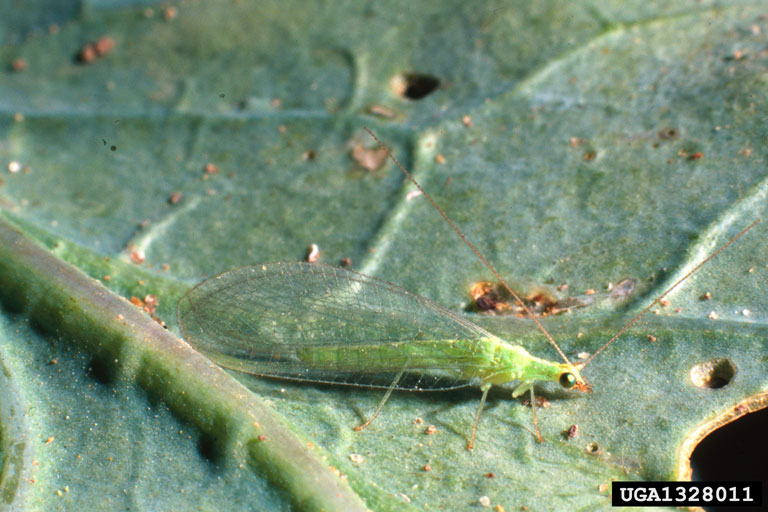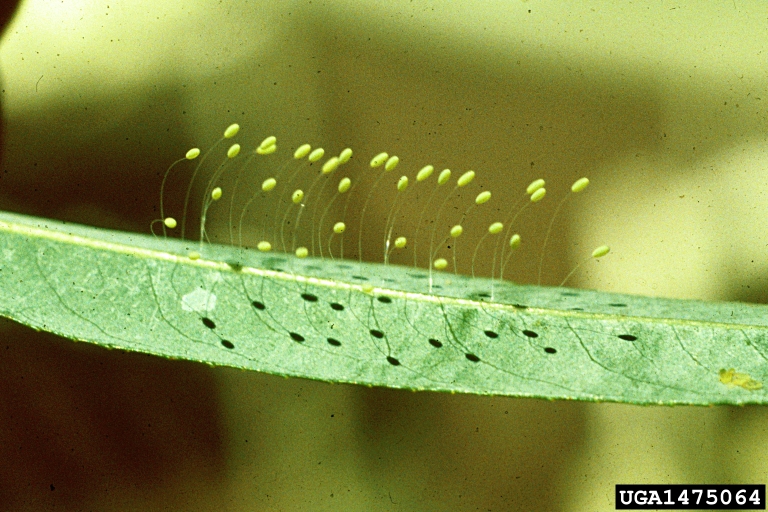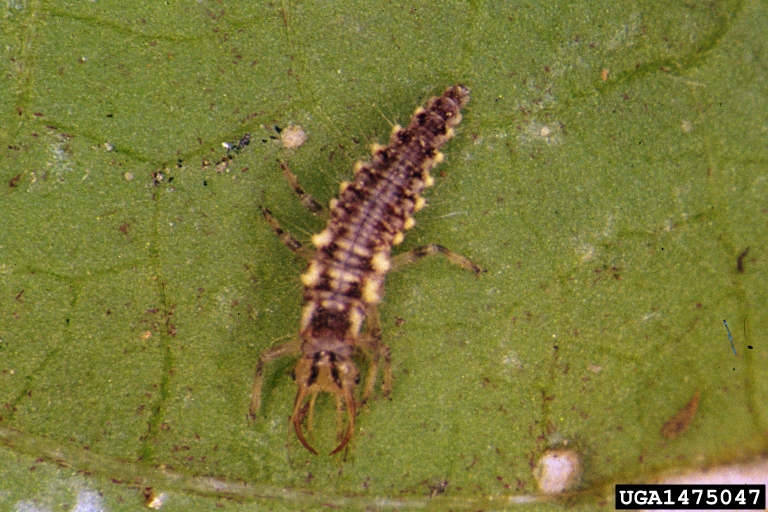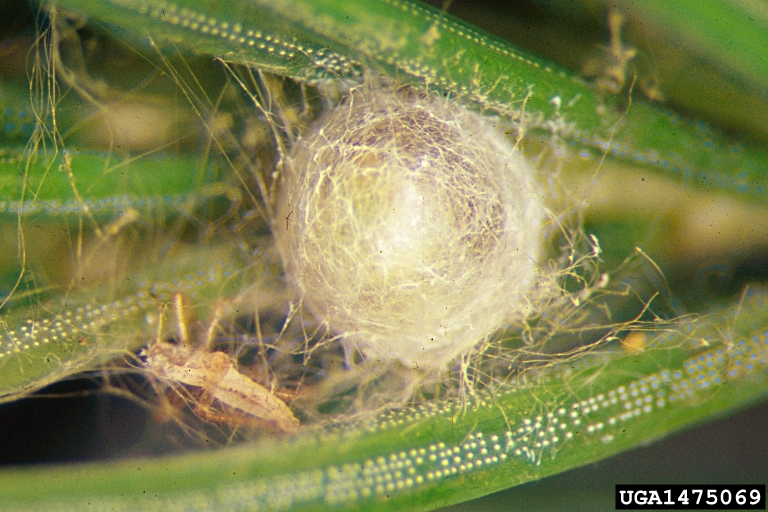 Learn About Lacewings - May 15, 2019 Jeff Schalau, Agent, Agriculture & Natural Resources University of Arizona Cooperative Extension, Yavapai County Most insects in your landscape, orchard, or vegetable garden do not feed on or harm plants. Insects need to be somewhere, and sometimes they are just passing through or resting as they go about their business. Yes, there are plant feeders of which most gardeners are ultra-aware and call “pests”. Other insects are looking for a meal and eat the “pest” insects. These beneficial insects are either predators that kill and feed on pests or parasitoids which have larvae that parasitize and may kill the host but live freely as adults. Insect pollinators are also considered beneficial. It is important to understand and recognize beneficial insects so they can be encouraged and not inadvertently killed during pesticide applications or other gardening activities. Most gardeners are aware of the predatory habits of lady beetles (ladybugs) and can identify the adults, but they may not be familiar with the egg masses and larvae which are often described as resembling a small Gila monster. Similarly, lacewing adults are often recognized when they fly to porch lights, but the eggs and larvae are less conspicuous. However, lacewings are also beneficial predators of many pest insects. Green lacewings (Chrysoperla spp.) are common in Arizona gardens, orchards, and landscapes. Adult green lacewings are delicate, pale green insects between 1/2 to 3/4 inches long. Their four wings have many veins, which gives them the net-like or "lace" appearance. They are attracted to lights at night and may be mistaken for moths except they have a characteristic fluttering flight when disturbed. Green lacewings also have an objectionable odor when handled. Brown lacewings (Hemerobius spp.) are also found in Arizona but are not as common and are roughly half the size of green lacewings. Green lacewings lay their pale green eggs on the tips of threadlike stalks on the underside of leaves. These stalks partially prevent emerging lacewings from eating other emerging lacewings. Brown lacewing eggs are not on stalks. Both green and brown lacewing larvae hatch within a few days. They are about 1/4 inch long, alligator-shaped, and light brown or grayish in color. They have six legs, with large sickle-shaped mandibles and are voracious feeders able to consume large numbers of aphids (they are also called aphid lions). Green and brown lacewing larvae also feed on other insects, including moth eggs, mealybugs, small scales, mites, whiteflies, lace bugs, other small insects, and when nothing else is available, each other. Larvae of both species feed for two to three weeks before pupation. When the larvae mature they form a small silken cocoon on an inconspicuous plant part in which they pupate. Adults emerge in about five days, but some species may overwinter in the cocoon. Green lacewing adults are active at night and feed on pollen, nectar and honeydew (the exudate of aphids and other sucking insects). Brown lacewings continue to feed on small insects as adults. As a skilled gardener, it is your mission to inspect your garden and landscape plants for signs of beneficial insects. Look for lacewing eggs on leaf surfaces. When you see aphids, look for lacewing larvae (and other beneficial insects as you learn to recognize them). If you are very observant, you may find a lacewing cocoon. The presence of adult ladybeetles is always a good sign. Evidence of other beneficial insects are empty skins of aphids and other insects. These empty aphids are called mummies and it is likely the pests were parasitized by Trichogramma wasps or another other small insect predator. When you see beneficial insects or their signs, you should give serious consideration before using insecticides. Beneficial insects are slower to recolonize after insecticide applications and using them may give a competitive advantage to the pest species. To help you recognize them, photos and additional information are included below. Get out there and look – you will likely be amazed at the things you see! Follow the Backyard Gardener on Twitter – use the link on the BYG website. If you have other gardening questions, call the Master Gardener help line in the Camp Verde office at 928-554-8992 or e-mail us at verdevalleymg@gmail.com and be sure to include your name, address and phone number. Find past Backyard Gardener columns or provide feedback at the Backyard Gardener web site: http://cals.arizona.edu/yavapai/anr/hort/byg/. Photos  Green lacewing adult (Chrysoperla spp., Alton N. Sparks, Jr., University of Georgia, Bugwood.org).
Green lacewing adult (Chrysoperla spp., Alton N. Sparks, Jr., University of Georgia, Bugwood.org). Green lacewing eggs on a willow leaf (Chrysoperla spp., Whitney Cranshaw, Colorado State University, Bugwood.org).
Green lacewing eggs on a willow leaf (Chrysoperla spp., Whitney Cranshaw, Colorado State University, Bugwood.org). Green lacewing larva (Chrysoperla spp., Whitney Cranshaw, Colorado State University, Bugwood.org).
Green lacewing larva (Chrysoperla spp., Whitney Cranshaw, Colorado State University, Bugwood.org). Green lacewing pupa (Chrysoperla spp., Whitney Cranshaw, Colorado State University, Bugwood.org).
Green lacewing pupa (Chrysoperla spp., Whitney Cranshaw, Colorado State University, Bugwood.org).Additional Resources Biological Control and Natural Enemies of Invertebrates, University of California Integrated Pest Management ipm.ucanr.edu/PMG/PESTNOTES/pn74140.html Green Lacewings, University of California Integrated Pest Management ipm.ucanr.edu/PMG/NE/green_lacewing.htmll Brown Lacewings, University of California Integrated Pest Management ipm.ucanr.edu/PMG/NE/brown_lacewing.html |